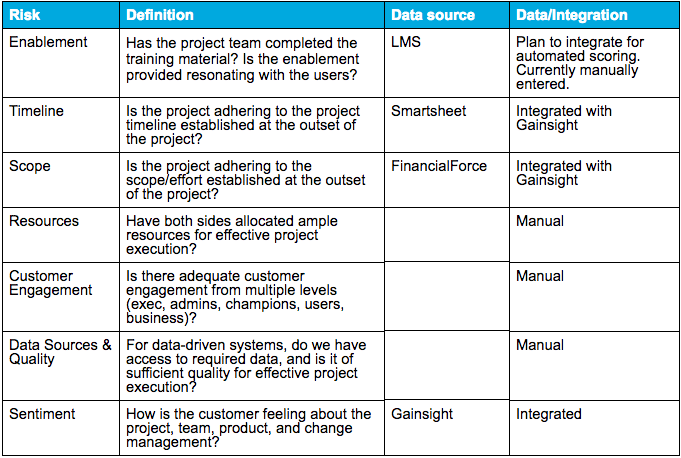With Nick’s foray into the rap game:
And the subsequent hit single :
I’m hearing the words, “Pass me the ball when the deal is done!” everywhere. The more I think about it, the more certain I am that Nick is referring to the Professional Services team repeatedly in the song. Who else gets the ball when the deal is done? And for good reason.
Professional Services play a pivotal role in the customer journey:
- It’s where the “rubber meets the road.” Customers are carefully evaluating our abilities to deliver based on our approach to the onboarding.
- Services and Education are largely responsible for enabling the customer to derive value from the product.
- Effective onboarding (high onboarding NPS) and time to value are leading indicators of advocacy and expansion.
- Ineffective onboarding (low onboarding NPS) typically drive instability and low adoption.
- Customer Success > CSM—and it includes Services.
- You know what they say about first impressions…
In the face of this criticality, as Services leaders, we are typically executing against multiple objectives simultaneously:
- Quote, scope, and sell Services efficiently.
- Manage backlog and resourcing utilization. Hire/partner accordingly.
- Deliver expected results and value to customers with high satisfaction.
- Manage revenue recognition and drive to a margin.
And to execute on the above, there are several tools, workflows, and analytics we use frequently:
Resource management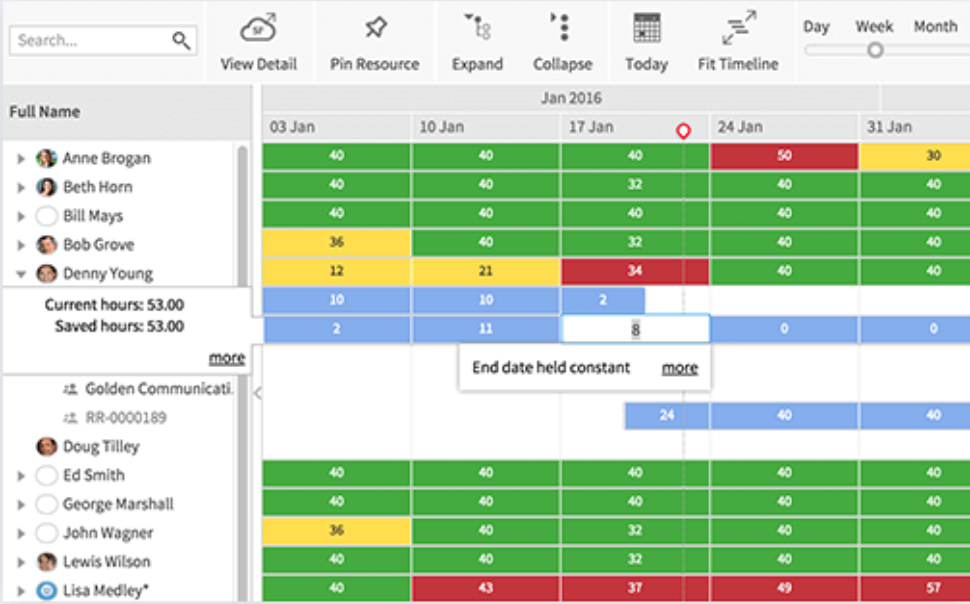
Project Management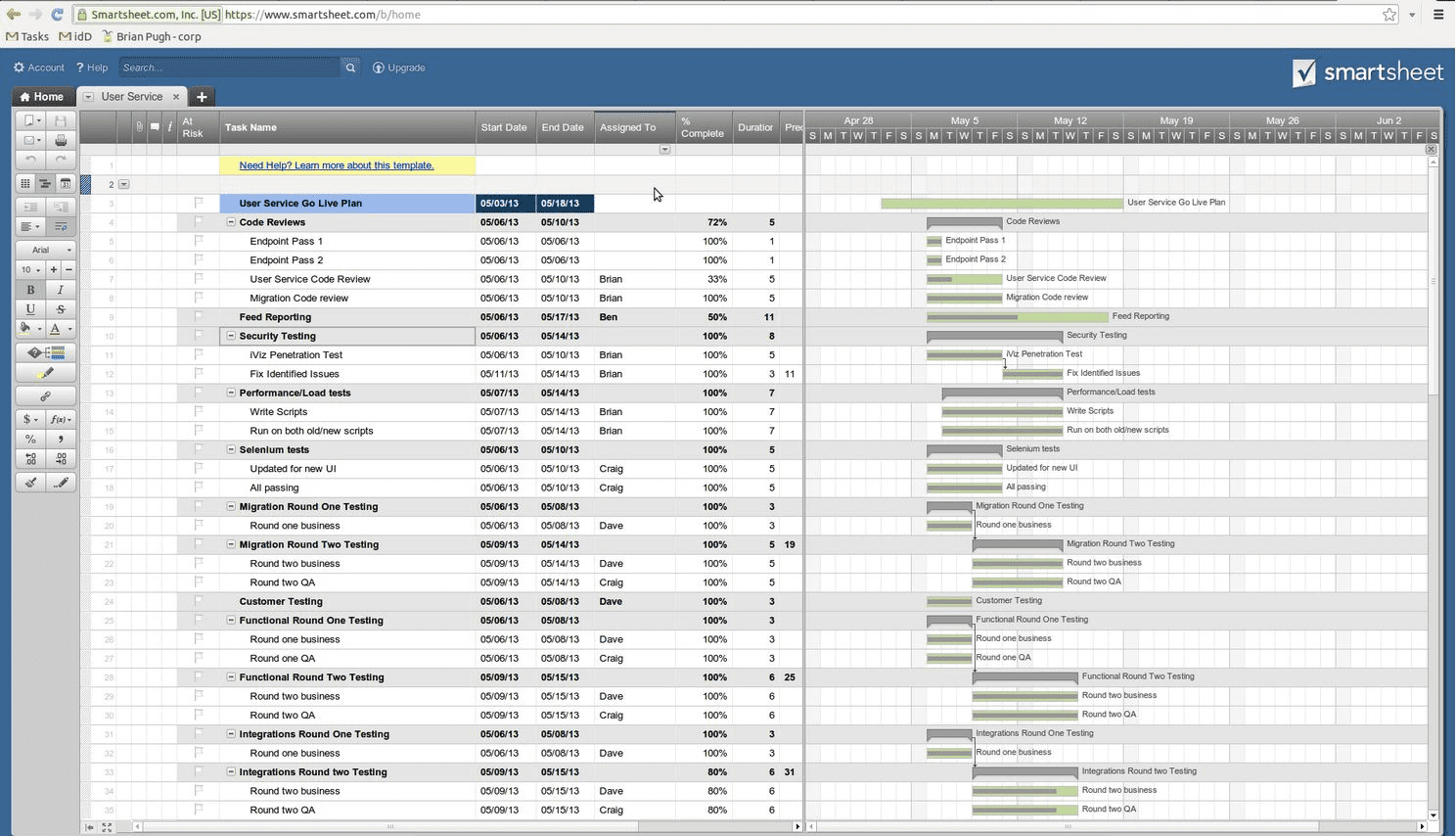
Utilization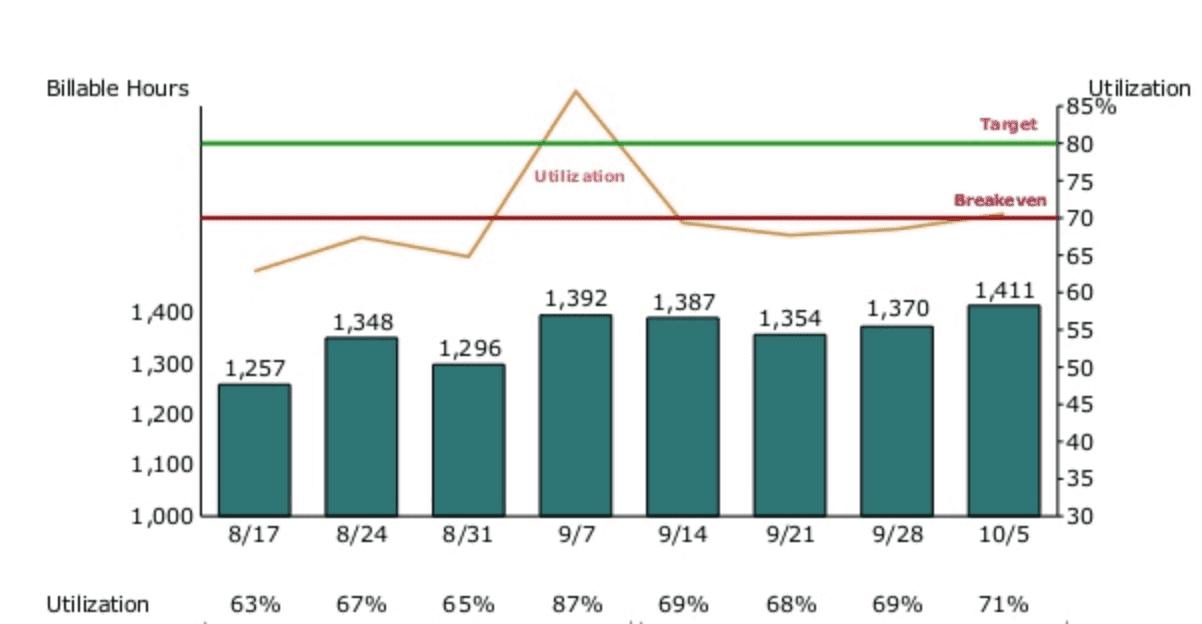
Revenue recognition and margins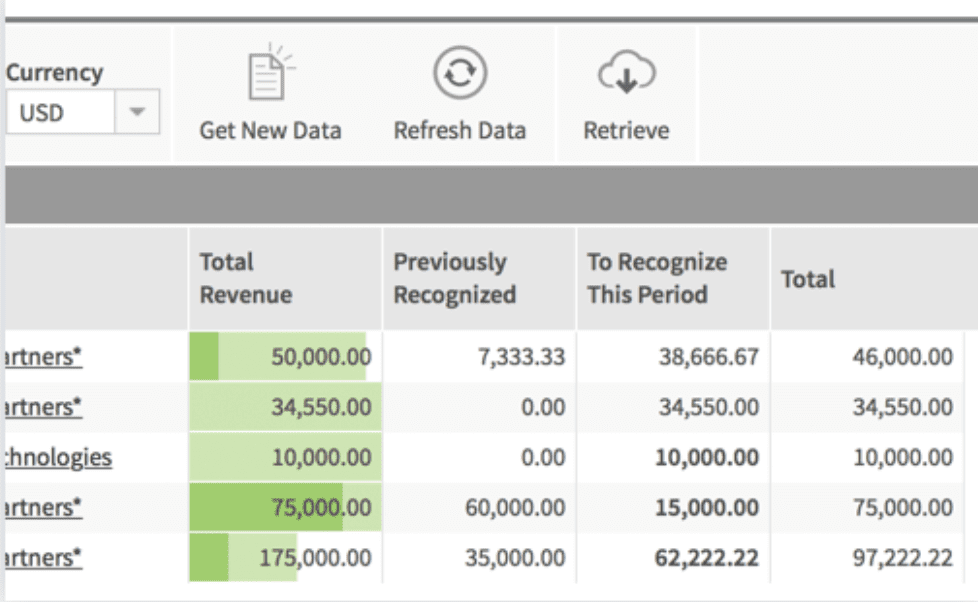
At Gainsight, in a bid to maintain fiscal discipline and efficiency, we review reports and charts similar to the above in detail each week across Services operations and leadership meetings.
However, as we dug into our onboarding performance, we found our customers were consistently asking us variations of the following questions:
- “We’ve been onboarded, but are we getting the value we were promised?”
- “You have a competent team, but we have spent a lot of time in an escalated status. Is this going to work?”
- “…the project team was too focused on hours and project accounting. Didn’t feel like a partnership.”
And as we dug deeper, we found that we had created a fairly efficient motion to scope, sell, and deliver—while managing utilization and financials effectively. However:
- Customers were spending too much time in an escalated state.
- Risk management was largely ad hoc depending on whether the project manager proactively surfaced the right information.
- Escalations were being responded to via inconsistent plays/methodologies.
And we didn’t have great answers to the questions:
- Are we driving success?
- Are we driving the outcomes and value promised during the sales cycle?
- Are we optimizing for the right metrics?
The Services Experience
To address these gaps, we implemented a number of enhancements to our project management and operations technology and processes. We found that with improvements to project status reporting, risk management, and escalation processes, we can battle risks much more effectively, vastly improving the probability of a successful engagement and a healthy customer.
To that end, as part of our recently released Periodic Table of Customer Success Elements, a comprehensive set of Customer Success best practices, we have dedicated an element to the Services Experience that incorporates these best practices.
Periodic Table of Customer Success Elements

The Services Experience element consists of four key parts: project scoring, health scoring, risk management, escalation management. In the section below, I will detail each of these and share how we use them to run Gainsight Services projects.
Project scoring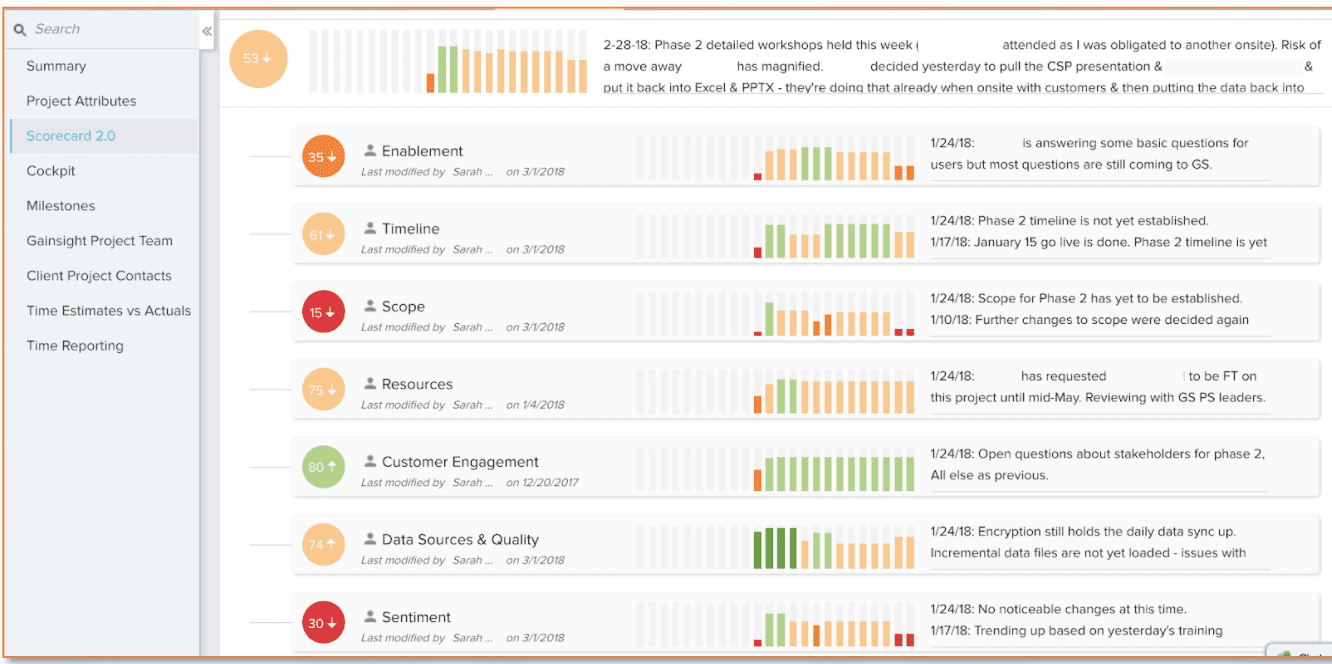
At Gainsight, all active projects are scored across seven risk areas with statuses and scores updated weekly. Here is how we define the risk areas and where we source the data:
Compared with our previous process, scoring all projects across these risk areas each week provides a significant amount of actionable information for the Practice leaders and escalation managers. A few examples:
1. Knowing the type of issue enables us to mobilize the right types of resources.
- Enablement concerns would be addressed by a focus on training/education, while timeline/scope concerns would involve a serious discussion with the project manager.
2. Trends for each risk area are critical.
- For a given customer, knowing that there is an orange Resources score has limited value.
- But, if you can see that it was red multiple weeks ago and is heading in the right direction, that is more helpful.
3. Status by risk area provides context
- By creating a process where all risk areas are updated weekly, we’re not leaving anything to chance.
- If there is a risk, the status text field will document a short summary and how we plan to address.
Health scoring
As our customers make their way out of onboarding and start using the product, we flip our view to focus on product usage and adoption. The report above helps us monitor customers in “hypercare” as we examine:
1. Habits – Depth – Daily active users
- What percentage of the users are logging in every day and using the product above a certain threshold?
2. Feature use – Breadth
- To what extent are the users are leveraging multiple features (of our top six)?
This focused attention on health/adoption has driven quite a few changes with regards to how we deliver Services. Amongst them, here are a few:
1. Projects are not complete when we run out of hours
- The Project team will invest resources and get the customer to lime/green habits.
2. End of project documentation and transition
- For each customer, we document Services performance on the project and customer health coming out of the implementation in a transition document.
- We have formal transition discussions for each customer to ensure there is clarity and alignment on how well PS has enabled the Customer Success manager to drive retention, expansion, and advocacy.
Risk management

By having rich information updated weekly across each of the project risk areas, we are able to determine:
- Which projects have the greatest overall risk.
- Which risk areas have the greatest impact on our Services business.
- One-to-many: How we can mobilize identical resources to address multiple customers impacted by an identical risk.
- How to score trends within individual risk areas.
By having more detailed answers to these questions, we are able to be more proactive and targeted in our approach to managing risk.
Escalation management
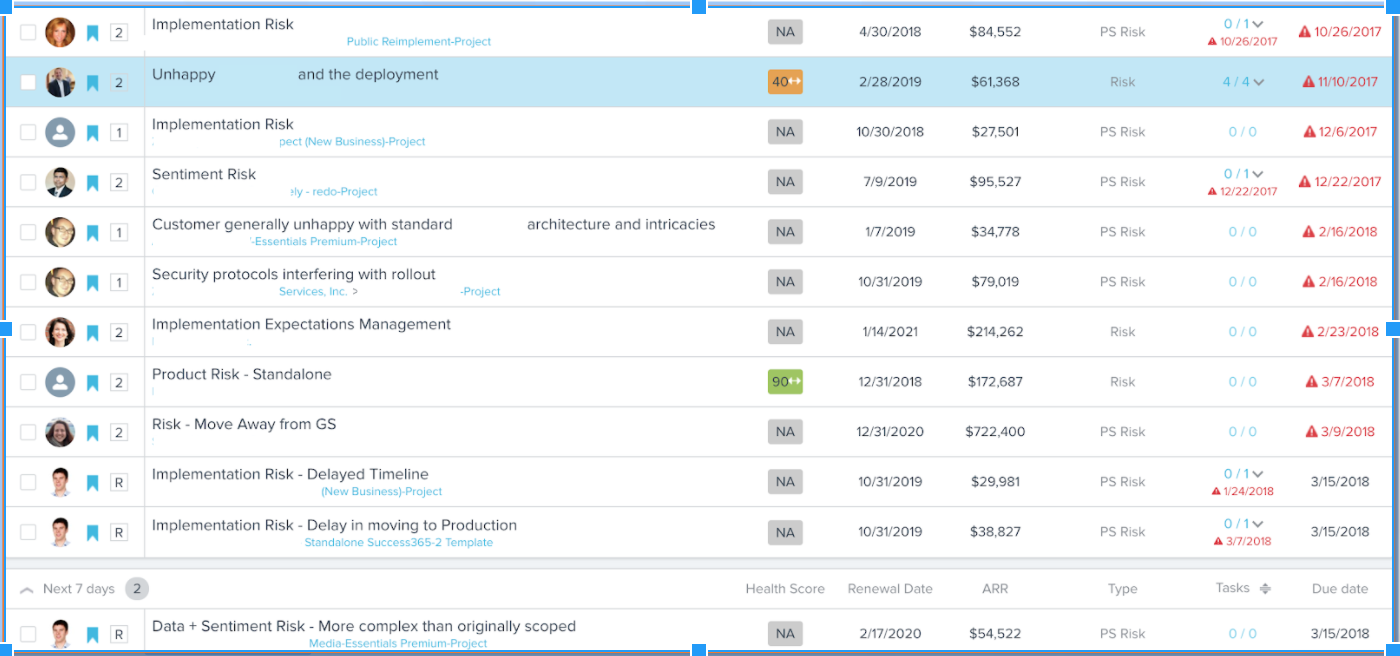
At Gainsight, we have rigorous processes to manage escalations via CTAs, in which:
- We document the Owner, Type/Reason, Priority, Status, and a success plan to resolve.
- Team-level collaboration and communication happens in the Timeline specific to each CTA.
- Flag feature is used to escalate to management.
- Follow-up and review happen frequently within the project team until the CTA is resolved.
Implementing the added rigor to the escalation process helps to ensure that escalations are being addressed more quickly and effectively by the Project team.
While we’ve made some strides, there is still much to do. Our plan is to continue enhancing the Services Experience through better systems and processes. We’re always looking for innovation, so if you have comments, feedback, or additional suggestions, let’s continue the conversation.
Feel free to reach out—I’m always happy to chat about PS philosophy with fellow CS and PS leaders.


